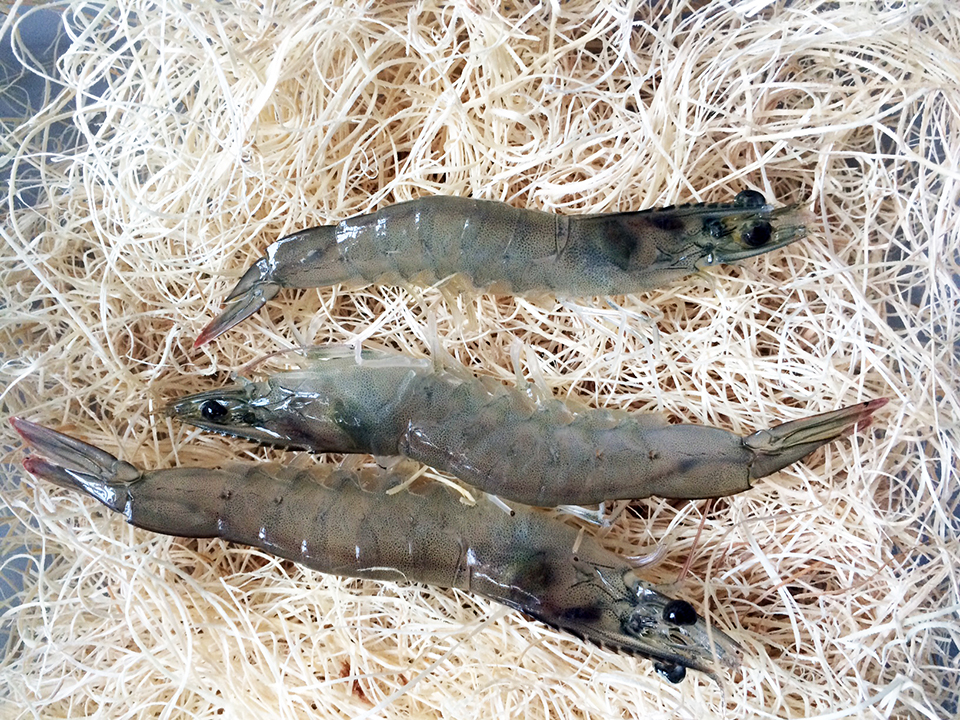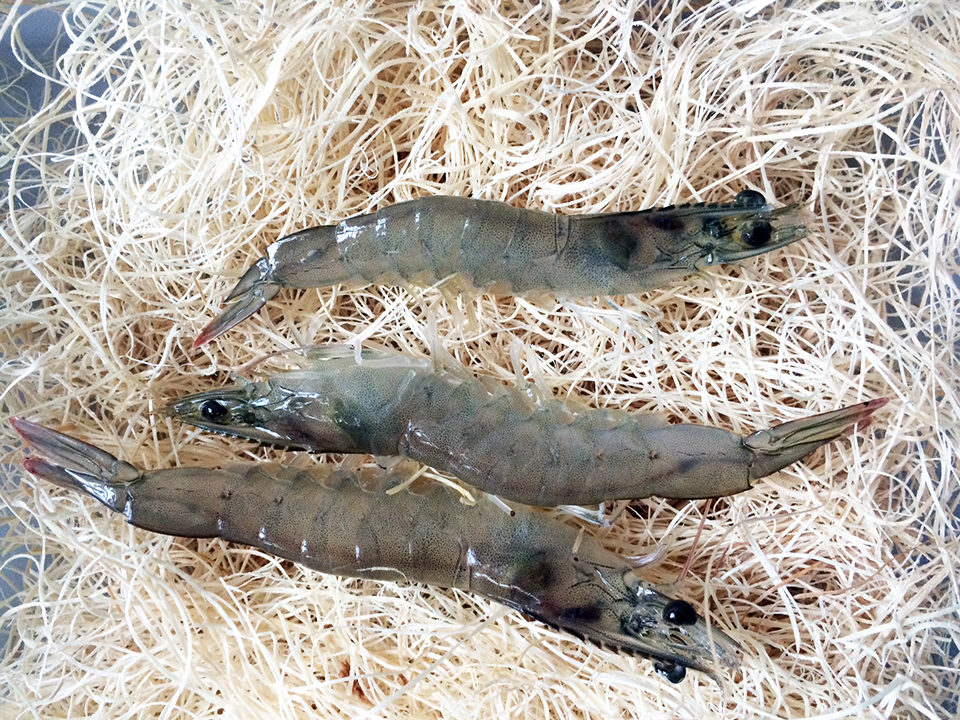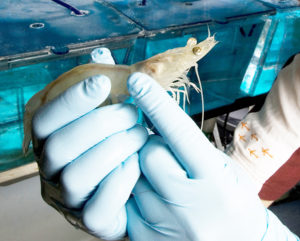As shrimp enthusiasts, we often handle our prized shrimp when performing tank maintenance, acclimating new shrimp, or selectively breeding them An important question arises – how long can shrimp survive out of water during these procedures? Can shrimp withstand short periods of exposure to air?
In this article, we’ll dive into the science behind shrimp survival times when removed from water We’ll cover how long different shrimp species can endure without water, what factors impact their air tolerance, and tips to maximize their out-of-water time.
An Overview of Shrimp’s Dependence on Water
First, it’s important to understand why shrimp require water to survive. As aquatic creatures, shrimp have specialized adaptations for life underwater:
- Gills to extract oxygen from water
- A thin exoskeleton that retains internal moisture
- Sensitive appendages optimized for aquatic mobility
Without water, a shrimp’s gills collapse and it cannot breathe. Moisture is quickly lost through their shells. And they lack any structures for terrestrial movement.
While shrimp do have limited ability to take in oxygen from air, this capacity is extremely low. Water is absolutely vital for their respiratory system and overall physiology to function.
So how long can our treasured shrimp friends survive in air before the lack of water proves fatal?
Average Survival Times for Shrimp Out of Water
The exact time a shrimp can spend out of water depends on several factors which we’ll discuss soon. However, here are some general guidelines on average survival times for different types of shrimp:
- Neocaridina (Cherry Shrimp): 15 min – 1 hour
- Caridina (Crystal Shrimp): 15 min – 1 hour
- Amano Shrimp: 1 – 2 hours
- Vampire Shrimp: 1 – 2 hours
- Bamboo Shrimp: 1 – 2 hours
Giant freshwater shrimp like Vampires and Bamboos have larger respiratory structures which may enhance air tolerance slightly. But all shrimp species measured in hours or less out of water.
Note these are estimates only – to maximize time, optimize handling conditions. Also, weakened or compromised shrimp will succumb quicker.
What Factors Impact Shrimp Air Tolerance?
Many environmental and handling factors affect how long shrimp can survive without water. Some key considerations:
-
Temperature & Humidity: Cool, humid air extends survival versus hot and dry.
-
Oxygenation: Stagnant air depletes oxygen faster than circulated air.
-
Pre-existing Health Issues: Weak/sick shrimp are more vulnerable than healthy ones.
-
Handling Care: Gently handling shrimp causes less stress than rough handling.
-
Surface Moisture: Keeping shrimp moist preserves gill function longer.
-
Food in Digestive Tract: Having food extends survival over empty digestive systems.
-
Age: Younger shrimp typically tolerate air better than older adults.
Optimizing these factors can help maximize shrimp survival when handling them out of water. Now let’s look at specific steps you can take.
Tips to Safely Handle Shrimp Out of Water
Follow these best practices when removing shrimp from their tanks:
-
Work quickly to minimize air exposure time. Have all tools ready beforehand.
-
Lower room temperature below 75°F and use a fan to keep humidity high.
-
Gently net shrimp with soft mesh nets to avoid physical harm.
-
Keep shrimp over tank water as much as possible when handling.
-
Place on cool, moist surfaces like damp paper towels if needed.
-
Transport in insulated containers like foam coolers to avoid temperature spikes.
-
Use battery-powered air pumps with air stones for oxygenation.
-
Handle healthy, young shrimp first and weakened individuals last.
-
Return shrimp to tank water immediately once procedure is complete.
Following these guidelines will help limit stress and allow shrimp to survive out of water for the maximum possible time.
Now let’s look at some common handling situations and recommended time limits.
Time Limits for Different Handling Procedures
Certain shrimp keeping activities require temporarily removing invertebrates from the water. Here are suggested time limits for some common procedures:
-
Acclimating New Shrimp: 15 minutes max.
-
Weighing on Scales: 30 seconds max.
-
Photographing: 1 minute max.
-
Viewing Under Magnifying Glass: 30 seconds max.
-
Moving Between Tanks: 2 minutes max.
-
Selective Breeding: 2 minutes max.
-
Emergency Tank Transfers: 5 minutes max.
Any activity requiring air exposure over 5 minutes may put shrimp at grave risk. Plan activities accordingly to avoid emergency scenarios.
Emergency Actions if Shrimp Collapse Out of Water
Even if proper precautions are taken, shrimp can occasionally still experience emergency health crises out of water exhibited by:
- Erratic swimming motions
- Loss of gripping capacity
- Collapse and inability to right itself
- Opaque, discolored appearance
In this high-stress situation, immediately:
-
Stop all handling/activities.
-
Immerse the shrimp back into tank water.
-
Use an eyedropper to gently flush gill chambers with tank water.
-
Dim tank lighting and remove other shrimp to reduce stimulation.
-
Add air stone for oxygenation.
With rapid intervention, collapsed shrimp may recover fully within several hours. But delaying significantly reduces survival odds. Be prepared to act.
Are There Any Exceptions? Extremes of Shrimp Air Tolerance
For nearly all shrimp species, mere minutes without water is fatal. However, some exceptional cases exist:
-
Certain mangrove climber shrimp like Harpiosquilla harpax have modified gills which allow brief terrestrial excursions above the tideline. Even so, they must maintain constant moisture and quickly overheat. Permanent life on land remains impossible.
-
Under human care, vampire shrimp and bamboo shrimp have survived for up to 12-24 hours out of water in cool, oxygenated containers during emergency tank maintenance. Still, this represents an outer extreme – most expire after just 1-2 hours.
-
There are apocryphal accounts of pet shrimp temporarily surviving in apparatuses like moist sponges or soaked paper towels for periods up to 48 hours. However, no survivability beyond 24 hours has been scientifically verified. Tales beyond this should be viewed with skepticism.
While amazing feats of air endurance pop up occasionally, these represent extraordinarily rare cases among populations of millions of shrimp. For any shrimp keeper, planning for water deprivation tolerated in minutes rather than hours or days remains the only prudent course.
To summarize key points:
-
Shrimp rely on water and quickly perish without it due to dependence on gills for oxygen.
-
Most shrimp species expire after 15 minutes to 2 hours out of water depending on conditions.
-
Temperature, humidity, oxygenation and gentle handling maximize air tolerance.
-
Careful acclimation, transfers and photography can avoid jeopardizing shrimp.
-
Rapid intervention can rescue weakened shrimp by restoring water contact.
-
A few exceptional shrimp capable of brief land excursions exist, but all require primarily aquatic living.
While shrimp are ill-equipped for any meaningful existence on land, purposefully optimizing handling conditions when required can allow briefly removing shrimp from their aquatic environments with minimal risk. But time out of water must be restricted to the absolute essential minimum.

Authors explored both marine shrimp and freshwater prawns

To help shrimp aquaculture keep growing in places that can’t compete with cheap imports, a niche market that will pay more for shrimp raised in water needs to be used. The live market represents a very promising niche for these types of markets.
Importers find it hard and expensive to ship live shrimp over long distances. Live markets give shrimp-producing countries that aren’t very well developed a chance to sell live seafood products in their own countries that can fetch a higher price.
For example, Americans eat an average of 1 shrimp per person per year, making it the most popular seafood dish in the country. 8 kg. Over 90 percent of the shrimp consumed in the U. S. is imported, and the majority of imported shrimp is from farmed, not wild-caught sources.
The U. S. has significant interest in further developing its shrimp aquaculture industry. Technically, it is possible to grow marine shrimp and freshwater prawns in both ponds and recirculating aquaculture systems. Businesses already use both types of systems. However, production costs for U. S. growers exceed those of foreign competitors. The U. S. market value of commodity shrimp is depressed due to the high volume of foreign product available.
Since it is challenging for importers to ship live shrimp to the U. S, the live market presents a promising niche for U. S. -grown shrimp.

Temperature and levels of ammonia, oxygen, and carbon dioxide can be controlled so that live shrimp can be shipped in water. However, the weight of water can be cost prohibitive when product is transported over long distances.
If shrimp can be shipped live without water weight, significant savings would be realized. Accordingly, studies have been conducted to develop handling and packing methods for waterless shipment of live shrimp.
After shrimp are harvested, they must be prepared for shipping. This involves the following steps:
- Lower the temperature of the water where the shrimp are to put them to sleep by adding ice. Move the shrimp and culture water to a smaller tank that has air flow. Slowly add ice and monitor the change in temperature. Make sure the dissolved-oxygen concentration remains greater than 5 mg/L.
- Put the boxes in the same water as the shrimp to soak them. Take out the cold packing and put it in a layer on the bottom of a clear fish bag. Place shrimp in a single layer on the wet packing material.
- Put oxygen from a cylinder into a bag and tie it up so that air can’t get in. The authors used temperature control chambers to keep the holding temperatures for their experiments stable for up to 72 hours.
- To see if the shrimp are still alive, take them out of the package and check to see if their gills move or if they react to being poked. On the other end, process the shrimp or put them in tanks with shrimp farming water.
Thanks to Shrimp, These Waters Stay Fresh and Clean | Short Film Showcase
How long can shrimp live out of water?
Shrimp can live out of water for a short time. Shrimps can probably survive around 15 minutes to an hour or two at max without water. On the contrary, there are even shrimps that can survive even a day without water. So, the period can vary depending on the type of shrimp.
Do shrimp need water to survive?
Shrimp live in a variety of aquatic environments, including saltwater, freshwater, and brackish water. However, all shrimp require water to breathe and survive regardless of their environment. Some species of shrimp can live outside of water for short periods of time. Shrimps are primarily aquatic creatures and require water to breathe.
Can Amano shrimp survive out of water?
Yes, amano shrimp can survive out of water. Typically, their internal water is enough to keep their bodies functioning and they can survive out of the tank for a short period of time quite happily, with only a little additional stress. How long an Amano shrimp out of water can survive for depends on the humidity and temperature of the room.
Can shrimp live on land without water?
Yes, shrimp can live on land without water but only for a few minutes to hours! Shrimp cannot live on land permanently. Shrimp are adapted to live in water and require a moist environment to breathe and survive. If they are left on land for an extended period of time, they will quickly dehydrate and die.
